If you are a beginner at cigar box guitar, one of the first things you will want to learn is how to play a few basic chords. In a recent cigar box guitar lesson we learnt how to play 10 major chords. In today’s lesson, we will learn 10 minor chord shapes you should know. We will use the open G tuning on the 3-string tuned G-D-G.
Watch the video below to get a quick start in learning 10 ways to play a G minor chord:
Minor Chord Shape #1
The holy grail of cigar box guitar chords is simply strumming the open strings producing a G5 chord. This chord shape has many uses as it functions primarily as both a G minor and a G major chord.
The other great thing about this chord shape is you can play it with 1 finger or a straight slide as you move it down/up the neck. Now, to use this chord to its full potential, you need to know where the root note is. In this case, the root note G is on the 3rd and 1st string (4th if you are playing a 4-string CBG). So you need to learn all the note names on the 3rd string to move the chord around:
QUICK THEORY TIP
The notes in a G major chord are G B D. Also known as the 1st, 3rd and 5th of a major chord.
The notes in a G minor chord are G Bb D. Also known as the 1st, flat 3rd and 5th of a minor chord.
The B or Bb are the notes that determine if the chord is major or minor. So, by not playing the B or Bb, the chord can function harmonically as either.
For more theory tips, check out this post – 10 theory tips every musician should know.
Minor Chord Shape #2
The next chord shape is the best sounding G minor and an essential chord shape to master. The G minor chord is easy with the open strings and your 3rd or 4th finger on the first string:
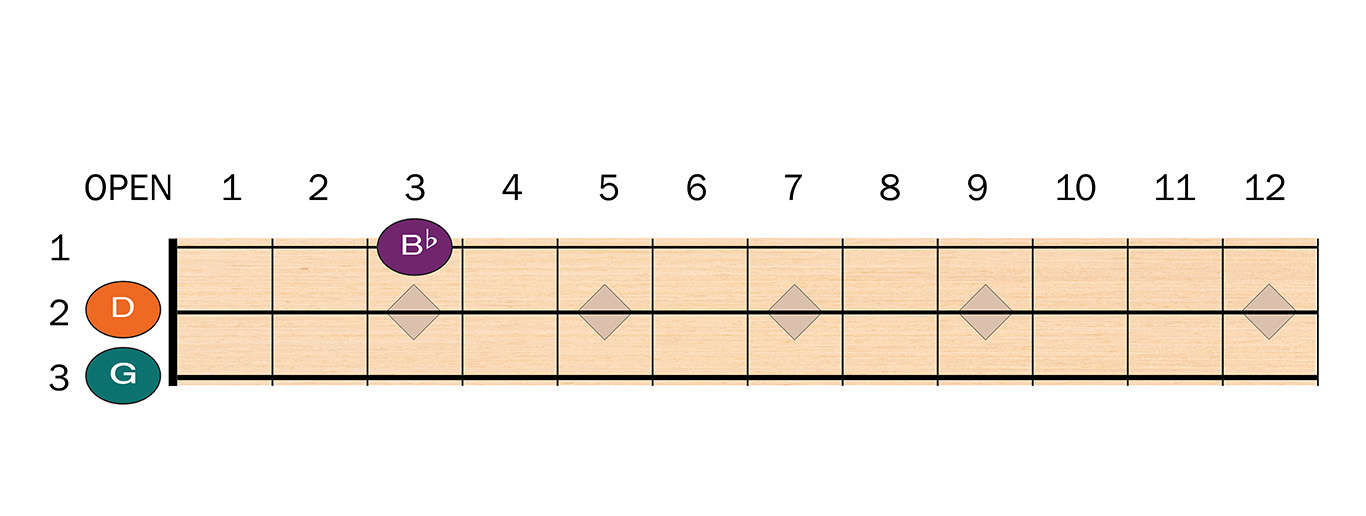
However, to play this minor chord shape down and up the neck, you need to make a barre. First, place your 1st finger in a straight line on all the strings, then extend your 4th pinky finger up 2 frets. This is an excellent example of a moveable chord. Here is the A minor chord:
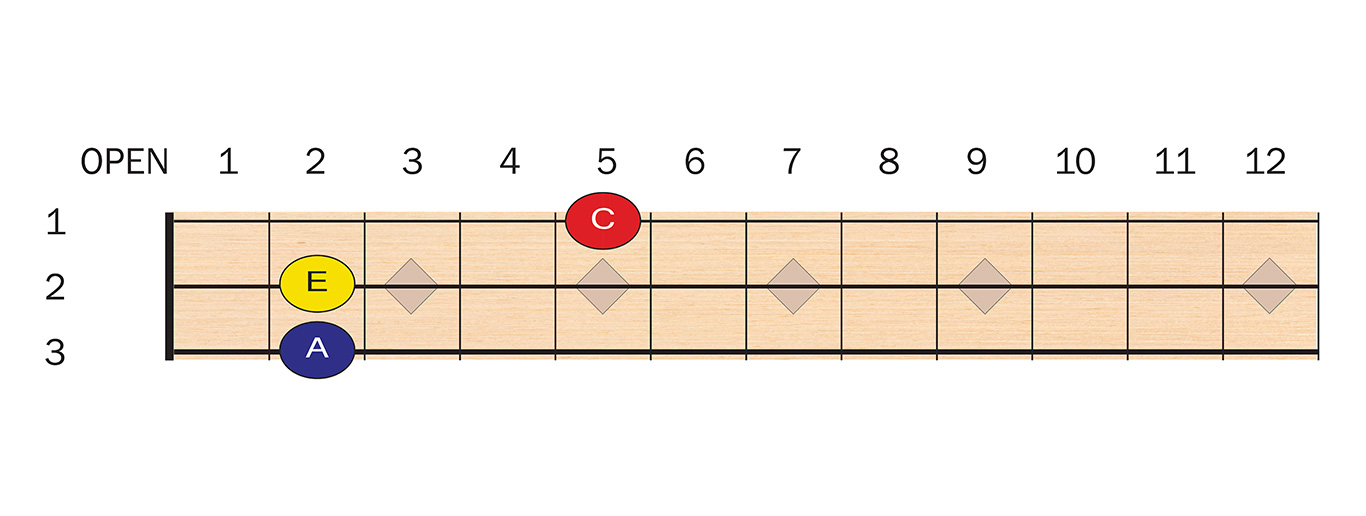
Again, to move this chord around, you need to know the root name on the 3rd string. Memorize all the notes on the 3rd string and practice moving the chord around the neck in exercise #1.
Exercise #1
| Chord | Bbm | Fm | Cm | Gm | Dm | Am | Em | Bm | F#m | C#m | G#m | Ebm |
| Fret | 3 | 10 | 5 | 0 or 12 | 7 | 2 | 9 | 4 | 11 | 6 | 1 | 8 |
Minor Chord Shape #3
You may have noticed the next chord shape is similar to chord shape #2. This is a cool thing that happens when tuned to GDG. If you flip the 1st and 3rd string notes, you get the same chord type.
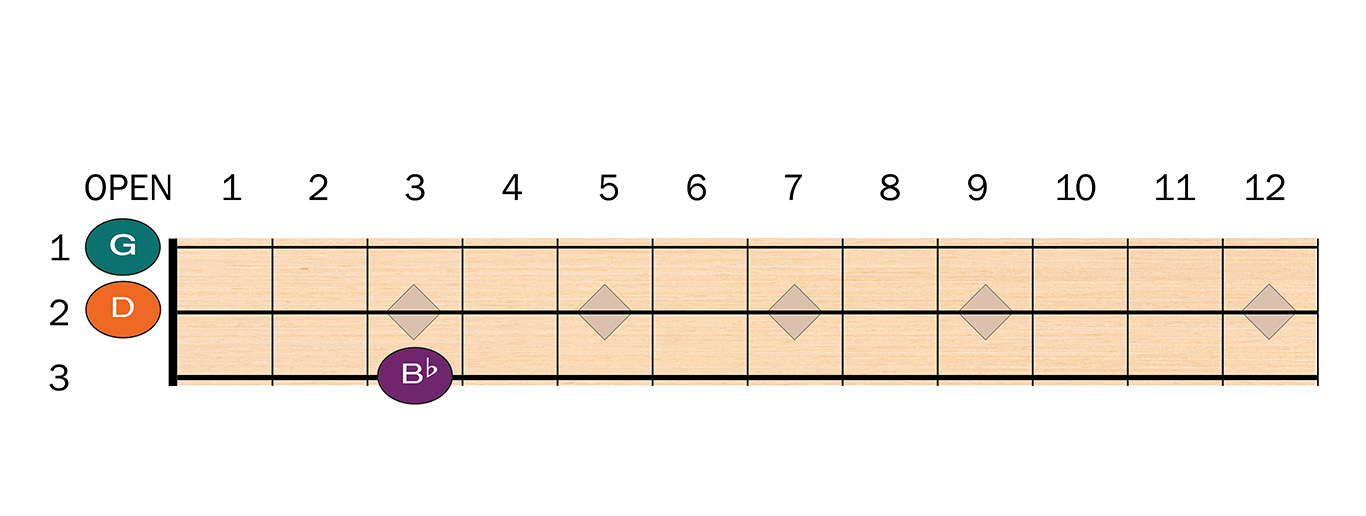
These chords are both G minors, but they do sound different. The big difference is the 3rd note of the chord, in this case, Bb, is now the lowest pitched note. This has a slightly less focused harmonic function but is still very useful, especially in songs that require the 3rd in the bass note.
This type of chord is written with a slash between the root note and 3rd. For example, Gm/Bb. This means it is a G minor chord with the Bb as the lowest sounding note. If you play in a band then often the bass player will play the slash note (Bb) while you play a G minor.
Minor Chord Shape #4 and #5
The following two chord shapes offer more examples of flipping the chord shape. These chords are also great to learn as they give you more shapes for the minor chord.
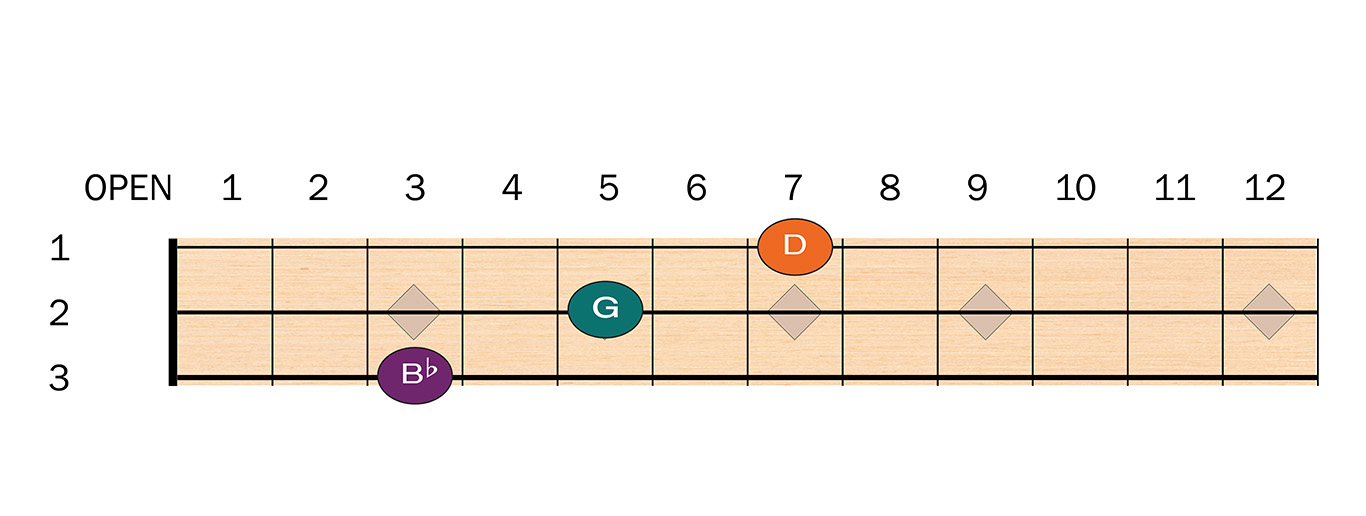
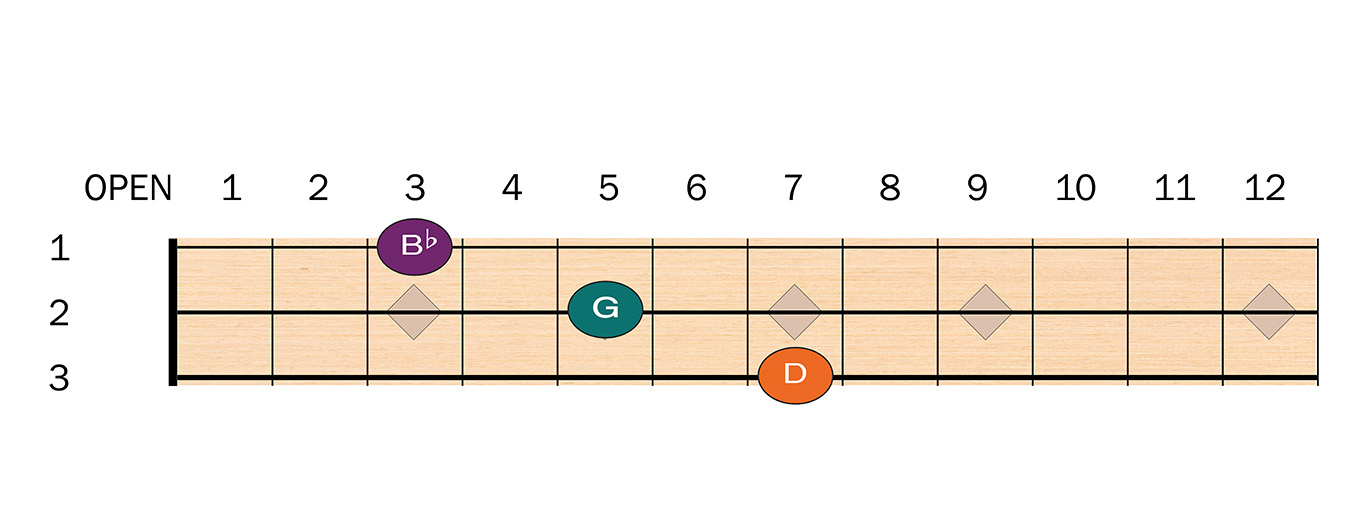
Minor Chord Shape #6
This next chord shape is also technically a G5 as it doesn’t have the 3rd of the chord. So, you can use this one as either major or minor just like minor chord #1. Major chords without the 3rd are also called power chords and are common in rock and blues music. Think AC/DC!
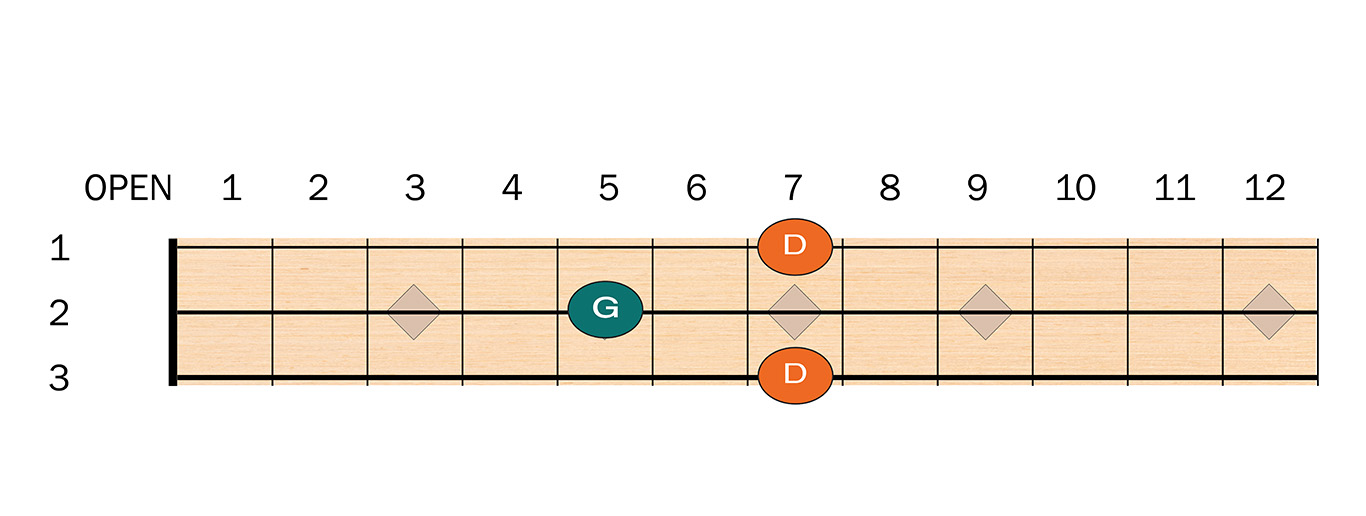
Minor Chord Shape #7
Chord shape #7 is our first chord that doesn’t even have a G in the chord! This will seem weird for sure, but because we only have 3 strings, we have to “substitute” chords that sound like the chord we are trying to play.
If you remember, the G minor chord has a G, Bb and D, but notice this chord only has a D and Bb. Usually, this chord will work fine as a G minor chord but probably not a chord you can just vamp on (vamp means to keep playing repeatedly). This chord works best when you play with another instrument playing the root note or passing chord.
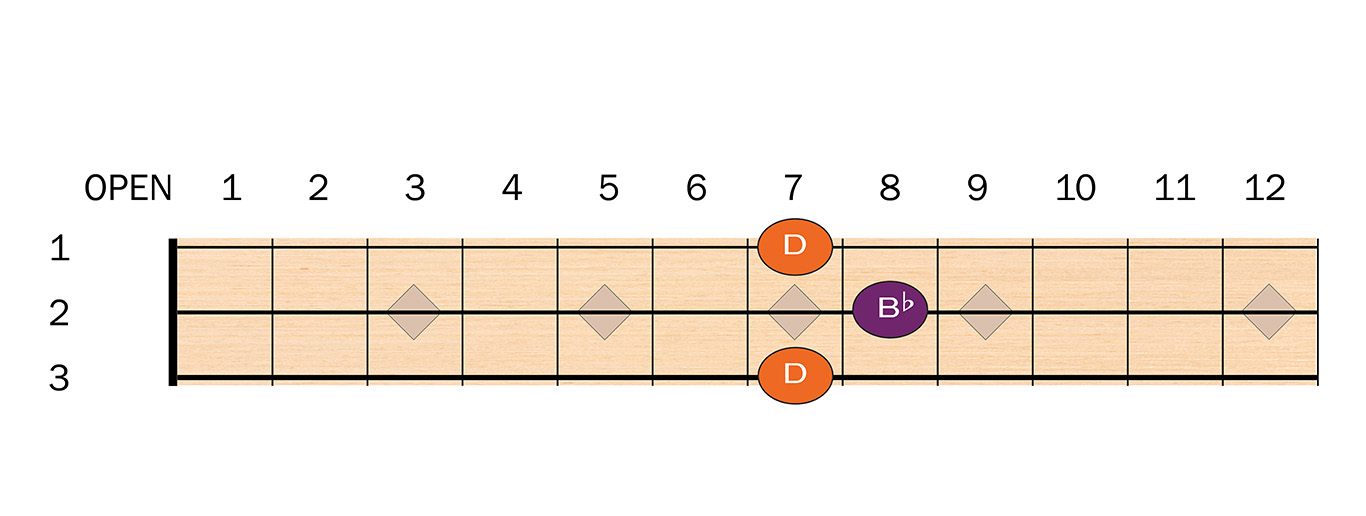
Minor Chord Shape #8 and #9
Here we go again, with the following two shapes being interchangeable. These two chord shapes are nice-sounding but, unfortunately, a big stretch for the fingers. Try to play these chords in the higher positions where the frets are closer if you can’t make the extended reach lower down the neck.
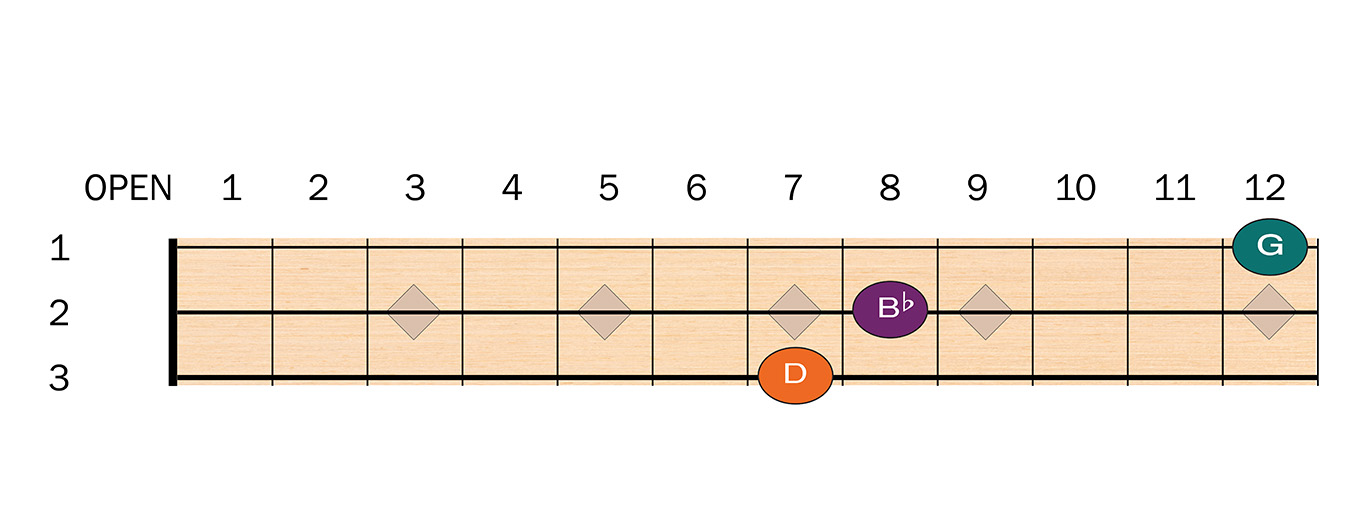
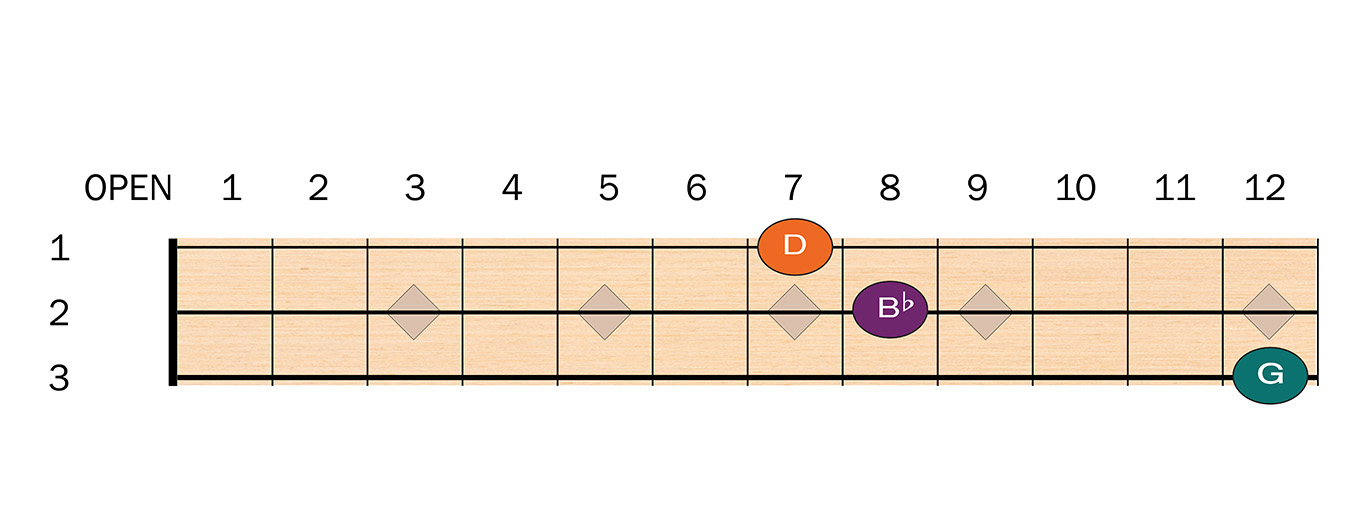
Minor Chord Shape #10
And finally, the last chord shape lacks the 5th note of the chord, the D. This chord has the 3rd, which determines the major or minor quality but may sound a bit unbalanced. Either way, this chord functions nicely as a major chord and is more playable:
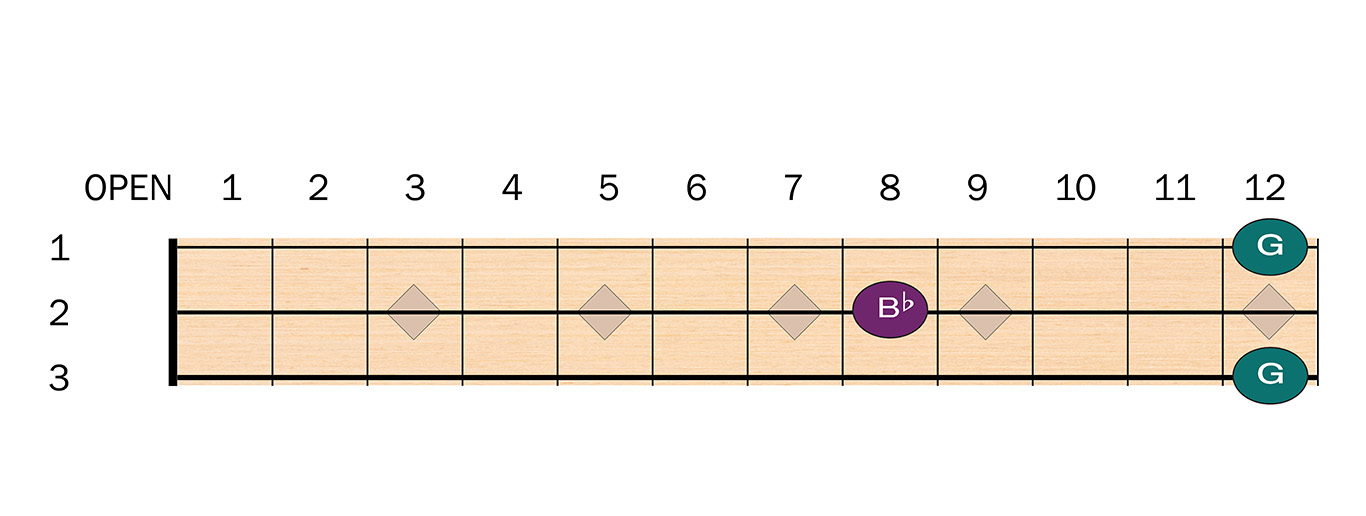
And there you have it, 10 handy chord shapes on the 3-string cigar box guitar. Of course, there are many more chords to learn, but this is a great place to get started playing chords on your CBG.
For more chords, check out the Complete Cigar box Guitar Chord Book for the 3-string and 4-string. Both books have over 2000 chords and lots of chord progressions to practice along with.
Check back often for more free cigar box guitar lessons, and leave suggestions for future posts below.
The Complete Cigar Box Guitar Chord Book
The Complete Cigar Box Guitar Chord Book is the most extensive library of chords ever assembled for the 3-string cigar box guitar. With over 2000 chords, chord progressions, strumming patterns and exercises included. Chords are shown with diagrams, tablature, notation, and some photos. A must-have for all cigar box guitar players.
3-String Cigar Box Guitar Chords in GDG Tuning
The Complete 4-String Cigar Box Guitar Chord Book
The Complete Cigar Box Guitar Chord Book is the most extensive library of chords ever assembled for the 4-string cigar box guitar. With over 2000 chords, chord progressions, strumming patterns and exercises included. Chords are shown with diagrams, tablature, notation, and some photos. A must-have for all cigar box guitar players.
4-String Cigar Box Guitar Chords in GDGB Tuning
3-String Cigar Box Guitar Chord and Fretboard Poster Set
- Elegant 3-string cigar box guitar chord and fretboard poster set.
- Two posters included – 3 string cigar box guitar chords and fretboards tuned GDG.
- 2-page chord and fretboard music theory insert also included (letter size).
- Convenient size poster 12” x 18”. Side by side, the two posters are 24” x 18”.
- All posters have a gloss finished printed on 100# Digital Gloss Text.
4-String Cigar Box Guitar Chord and Fretboard Poster Set
- Elegant 4-string cigar box guitar chord and fretboard poster set.
- Two posters included – 4-string cigar box guitar chords and fretboards tuned GDGB.
- 2-page chord and fretboard music theory insert also included (letter size).
- Convenient size poster 12” x 18”. Side by side, the two posters are 24” x 18”.
- All posters have a gloss finished printed on 100# Digital Gloss Text.
[yop_poll id=”5″]
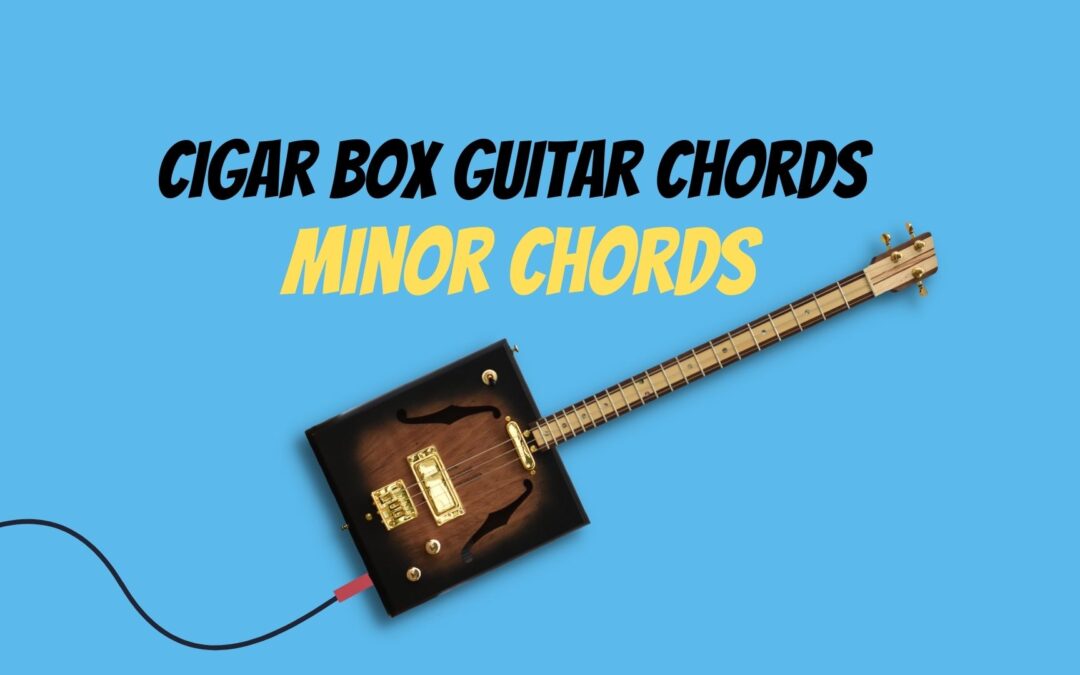
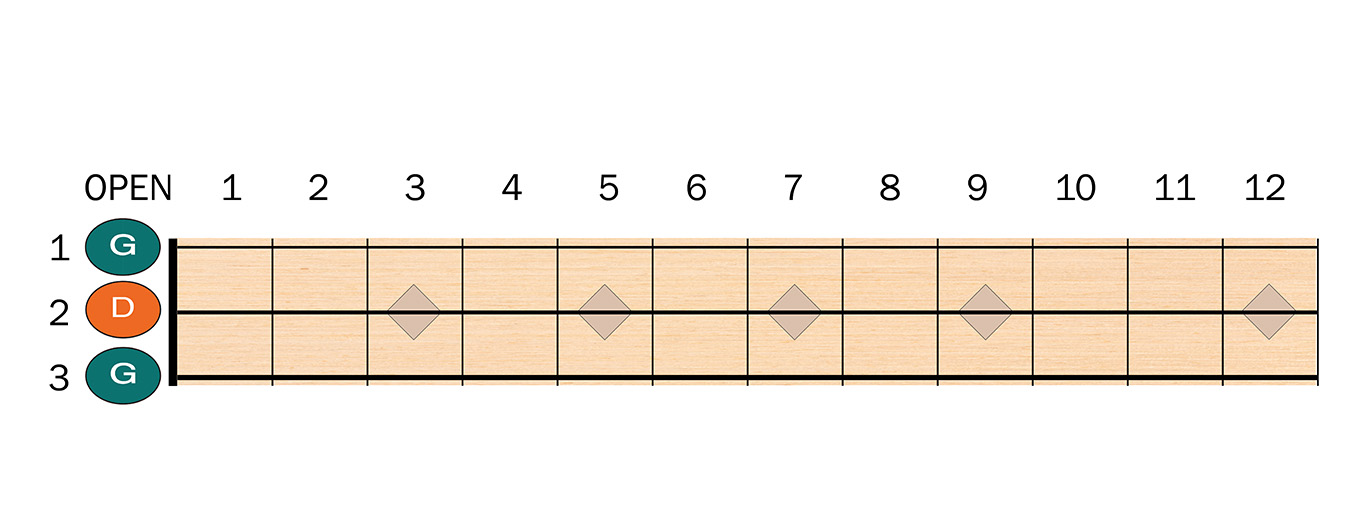

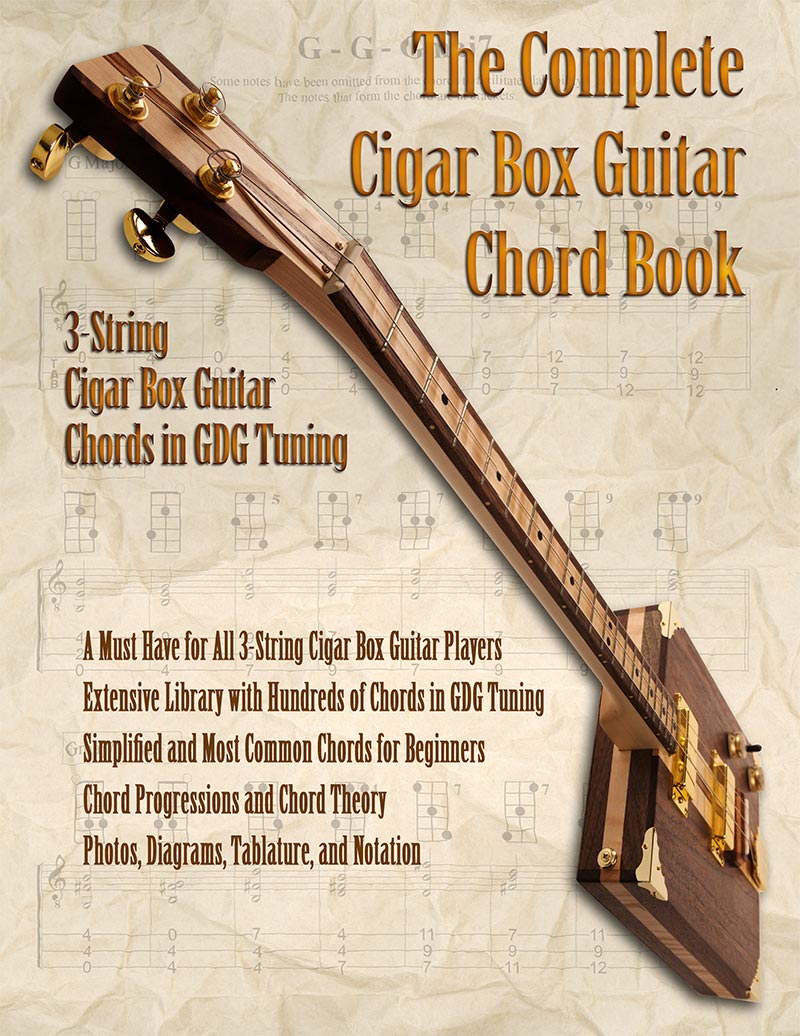
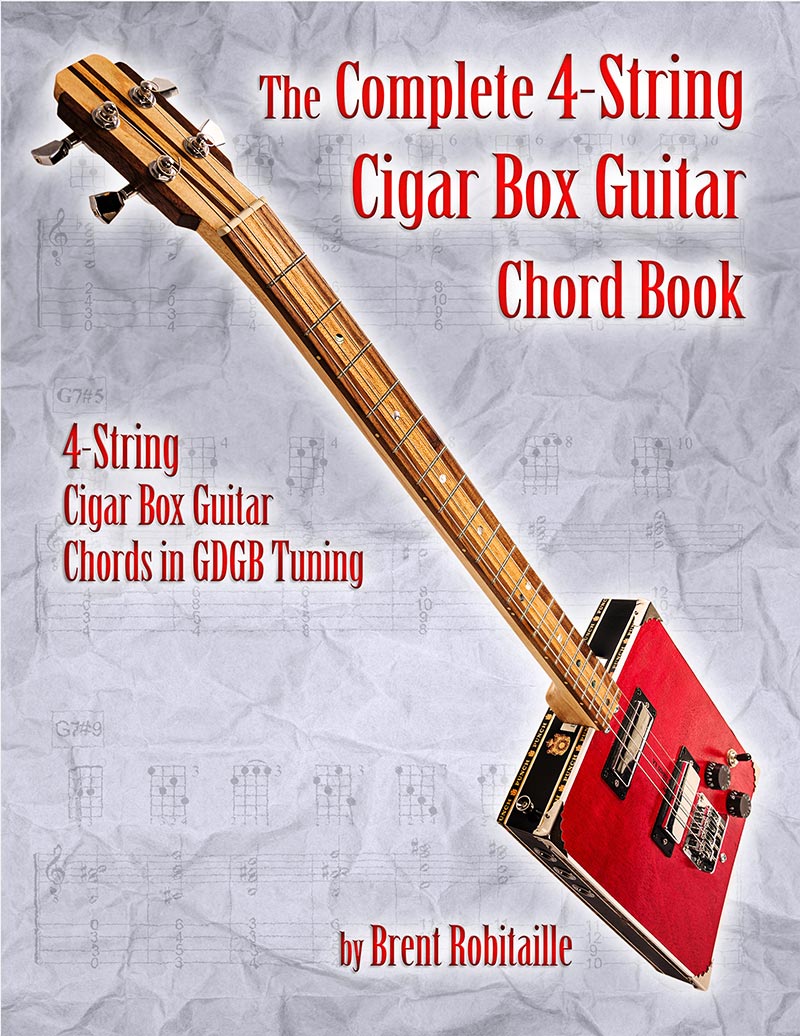
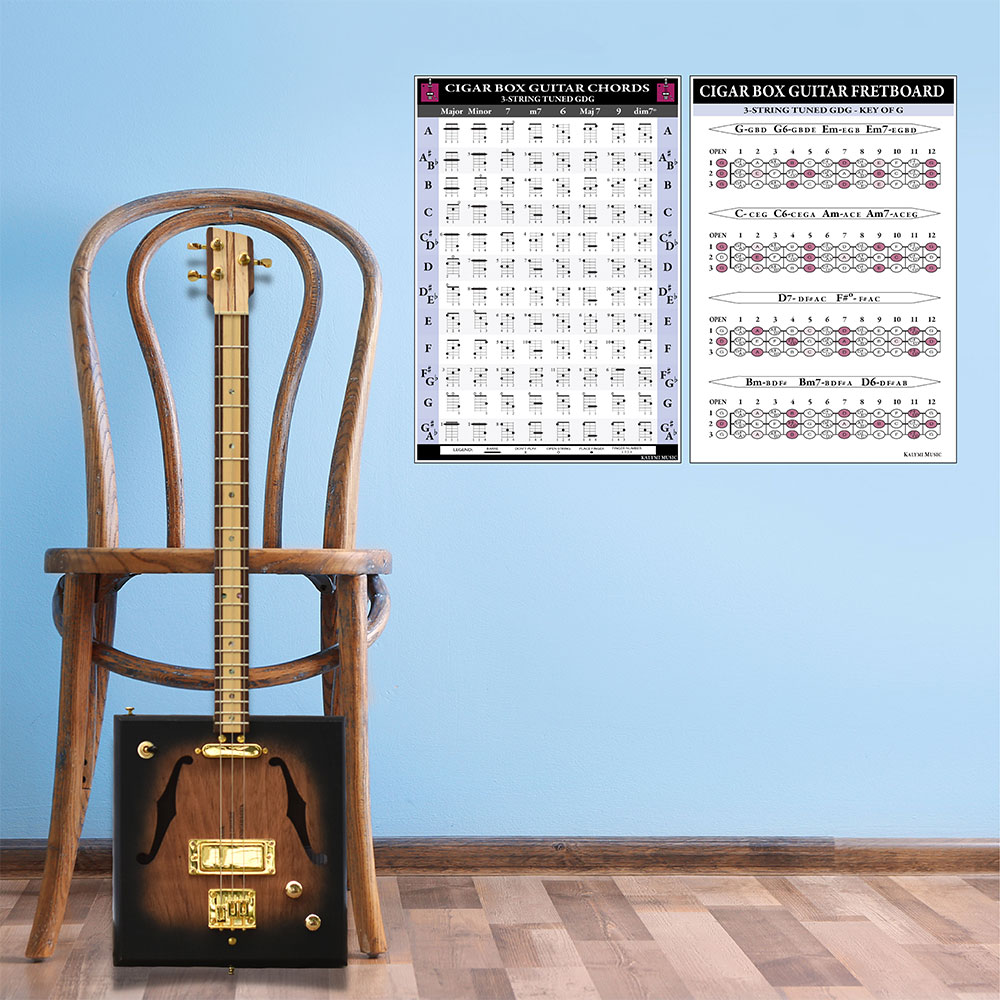
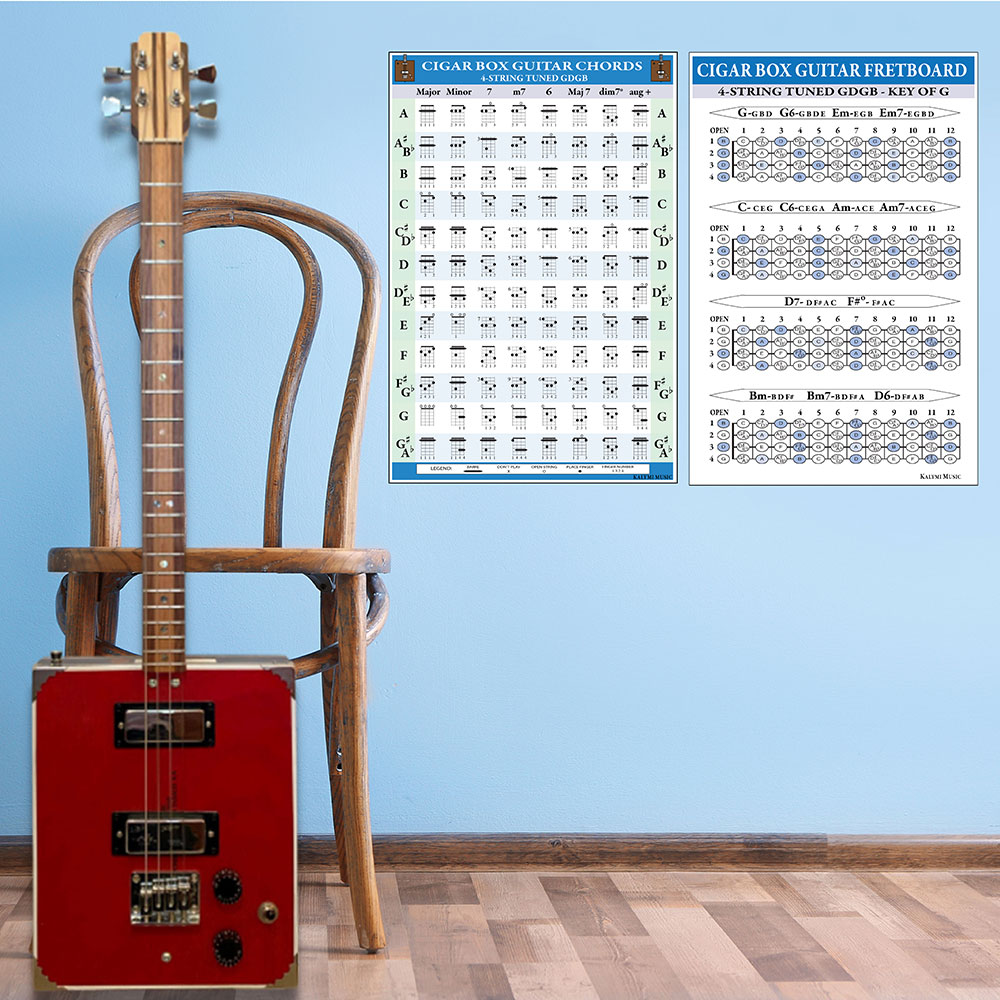
How is it no books are published for 3 string cigar box guitar using Open G Major ( GBD ) tuning? I think someone came up with GDG tuning and it became the standard mainly because it uses a short cut way of using power chords. You use the same chord which can be major or minor
True, you can play much in that tuning, but in my opinion, GBD is better. Your 145 progression are neatly close together and can be played in reverse order. You can play also play 4 note chords with the compromise of leaving out the fifth of a chord to make it a triad. I use the first 3 strings of a standard guitar set. The aim is to do about what six string can do with only 3 strings. Just an observation to pass on.
Hi Don, thanks for your suggestions. I couldn’t agree more about the GDG tuning. The next cigar box guitar book I publish will be addressing that exact issue.